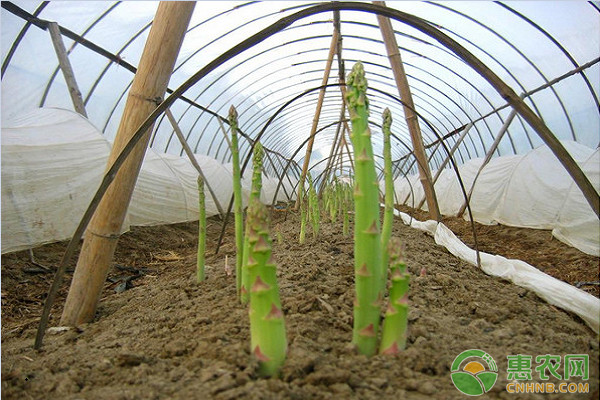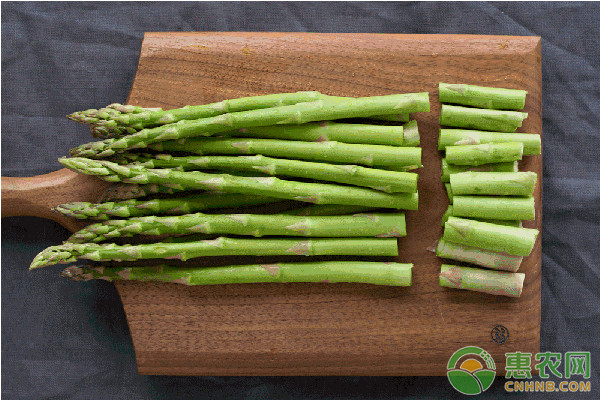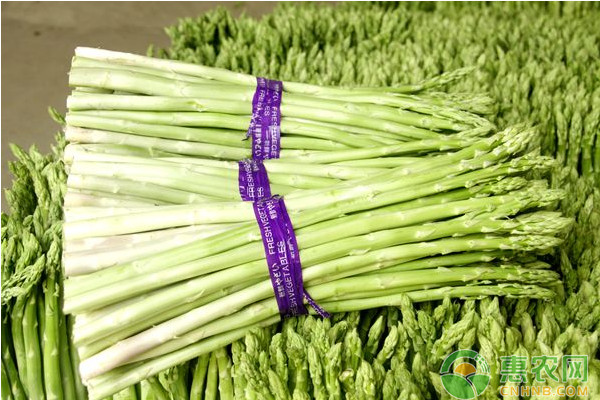In recent years, the international market has put forward higher requirements for food quality and safety production. The adoption of pollution-free standardized production has become a major problem that must be solved in China's agricultural product export reduction technical barriers. The cultivation of asparagus under pollution-free forest is a new cultivation method. While ensuring a certain yield, it can avoid the use of a large number of herbicides and insecticides, avoid excessive pesticide residues, and truly achieve pollution-free cultivation.

1 Cultivation techniques
1.1 variety selection
The selection of asparagus varieties is suitable for the excellent varieties cultivated in the northern part of Shanxi Province. It is the hybrid breed champion cultivated by the Chinese Academy of Agricultural Sciences.
The champion variety has three advantages:
1 good productivity
Early spring sprouts early, the young stem grows neatly in the early stage, and the number of stems is large and strong throughout the growth period, and the first-class shoot rate is high.
2 good quality and commodity traits
The main symbol of high-quality asparagus, the tender stem is large, the bamboo shoots are crispy, the bamboo shoots are round and round, the top is tightly wrapped, and the appearance is beautiful.
3 strong resistance
Strong resistance to diseases and insect pests.
1.2 Woodland selection
The stand was selected from the poplar plantation. The young age to the middle age of the forest, the pests and diseases were light, and the row spacing was 5m. The forest and the asparagus form a symbiotic relationship, and the upper structure of the forest is shaded by asparagus, which does not affect the growth and development of the lower asparagus.

The forest land chooses a flat land with convenient transportation, which requires deep soil layers, convenient watering and good drainage.
1.3 Cultivated land and work
It must be done intensively before planting. It is required to first level the plot, deep ploughing to a depth of 35cm, breaking the bottom of the plow, breaking the dark and dark, and then repeatedly cultivating the fine sputum, reaching the soil pine, the ground, the surface is flat, the soil permeability is good, laying for the growth of asparagus Good foundation. Before the ploughing, apply 3m3 of fertilizer per acre, and turn it into the soil with the cultivated land.
1.4 Trenching and planting
According to the row spacing of asparagus, the planting ditch specification is determined. The available area of ​​poplar line accounts for 50% of the forest land area, and the planting density per acre is 1,100.
Plant spacing: 0.3m × 1m.
Planting ditch specifications: the depth of the trenching is at least 35cm, and the middle soil can reach 40cm. The bottom width is 35 cm and the mouth width is 45 cm. The length is determined according to the plot.
When digging trenches, the raw and mature soils should be naturally separated. When backfilling, the mature soil should be applied to the lower layer of the ditch, and the trenching time should be from late March to early April.
1.5 seedling requirements
The standard of planting seedlings is first-grade seedlings: seedling height is more than 30cm, there are more than 3 aboveground stems, storage roots are 7-10, and fresh weight of root plate is more than 50g.
Seedling requirements: When planting seedlings, it is necessary to dig deep and gently, less damage to the roots, try to retain the root length, and quickly extend and absorb the effective nutrients in the soil after transplanting, which is conducive to the cultivation of strong seedlings. The use of protected seedlings and nutrient seedlings should be transplanted with soil as much as possible. The long-distance handling of the plots should be carried out with plastic bags to avoid the loss of water and nutrients in the roots.
1.6 planting time
From early to mid-April. At this time, the cultivated asparagus seedlings are not germinated before the squama buds have been germinated, that is, when the doshing period of the asparagus is about to end, the roots of the seedlings are weak, the new roots are not developed, and the survival rate of the transplanted roots is low, and the survival rate is fast and the growth is strong. Conducive to early high yields.
1.7 Planting requirements
Planting depth requires deep planting, and the height is 8~10cm above the stem. Before the asparagus seedlings are planted and covered with soil, the roots should be naturally arranged in the horizontal direction on both sides of the planting ditch. This is conducive to the vertical development of the asparagus in the horizontal direction, and the roots are simultaneously expanded toward the wide line.
2 post management
From colonization to harvesting, this period of time is a young age. The main objectives of management are: to promote the main, promote the return of seedlings, promote early development, rational use of fertilizer and water management and pest control techniques, in order to achieve the cultivation of strong plants in the same year. Take the bamboo shoots to lay the foundation in the coming year.
2.1 Fertilization
Asparagus when the young stems out of the ground 10cm, can apply a thin human excrement or 2 ~ 3kg of urea per mu and 4 ~ 5kg of compound fertilizer, 50kg of herb ash, first ditch at the plant 20cm when fertilizing, put fertilizer into the ditch Cover the soil to promote seedling growth.
When the second stem is pumped, 5 kg of urea and 5 kg of compound fertilizer are applied per acre, and then the fertilizer is applied once a month, and the amount of fertilizer is increased by 1 kg each time until the autumnal equinox. After the plant has been pumped several times, the new stem root disk is gradually enlarged, and the underground stems are expanded to become more vigorous after the autumn.
2.2 watering
In the rain-scarred and arid areas, water is poured every 10 to 15 days. The amount of water to be drenched is 25 cm deep. It should be watered after each fertilization to facilitate root absorption. Before the winter soil is frozen, it is necessary to pour the frozen water for the germination of the buds in the coming year.
2.3 weeding
The asparagus cultivation has a large row spacing, the young plants are small, the coverage is low, and the field bare area is large. When the soil temperature rises in early spring, not only the young plants grow fast, but also the various weeds are more likely to breed and spread, and the young asparagus plants compete for water and must Clear in time. The grasses must be removed by hand, and the rows can be combined with cultivating.

3 pest control
3.1 weeding and pest control
Removal of weeds in the field, improvement of the environment, deterioration of various pest breeding sites, thereby reducing the number of pests and diseases.
3.2 Biological control
Use natural enemies or BT biological agents to control pests such as milky fungus, Beauveria bassiana, Helicoverpa armigera, and tobacco budworm.
3.3 manual capture
In the field where the asparagus hibiscus moth is harmful, the old larvae are used to raise the surface for the flood season, and the shovel (茧) is used. Every 2d 扒 1 time, killing more than 80%, each time in need of morning. Using the adult worms just unearthed on the ground, the worms are picked up every morning and picked up early and late.
3.4 trapping adults
Adults such as cockroaches and cockroaches have strong tropism for light, sweet and sour, and can be trapped by the traits of various pests.
The above is the key points of the cultivation techniques of asparagus under the small series for everyone. If you are interested in this cultivation mode, you can come to Huinong.com to learn more!
Hospital Bed In Surgical Equipment,Hospital Bed In Hospital Table,Manual Hospital Bed,Icu Hospital Bed
Shanghai Rocatti Biotechnology Co.,Ltd , https://www.ljdmedicals.com